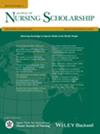Does Grit Matter? The Relationship Between Grit and Drinking Behavior Among Adolescents: A Cross-Sectional Study of a Nationally Representative Sample of Korean Adolescents
Abstract
Introduction
Drinking is the most problematic health behavior among adolescents. Adolescent drinking behavior is likely to continue into adulthood and can lead to various social problems, development of multiple diseases, and even death. Grit is defined as the ability to persist in the face of a struggle. While grit can be a protective factor against risky health behaviors, there is a lack of information on how grit is related to adolescent drinking behavior. Based on the integrative model of adolescent health risk behavior, this study aimed to examine how intrapersonal, interpersonal, and cultural/environmental factors were related to adolescent drinking behaviors. Especially, this study aimed to examine the relationship between grit and adolescent drinking behavior by adding grit as a psychosocial maturity factor.
Design
A cross-sectional study using a nationally representative sample of Korean adolescents.
Methods
A secondary data analysis of the 5th wave of the Korean children and youth panel survey (N = 2252) was conducted. The study sample comprised 11th-grade high school students. Descriptive statistics and logistic regression analyses were performed
Results
Model 1 included intrapersonal, interpersonal, and cultural/environmental factors associated with adolescent drinking behavior. Model 2 added grit to the factors in model 1 to examine how grit is related to adolescent drinking behavior. After controlling for intrapersonal, interpersonal, and cultural/environmental factors, a higher level of grit was associated with lower odds of drinking behavior among adolescents (OR = 0.413, 95% CI = 0.257–0.662, p < 0.001)
Conclusion
A higher level of grit was associated with lower odds of drinking behavior among adolescents after adjusting for intrapersonal, interpersonal, and cultural/environmental factors
Clinical Relevance
As grit can help deter risky health behaviors, guardians, teachers, and school nurses should focus on fostering grit among adolescents through education, mentorship, and intervention programs





 求助内容:
求助内容: 应助结果提醒方式:
应助结果提醒方式:


